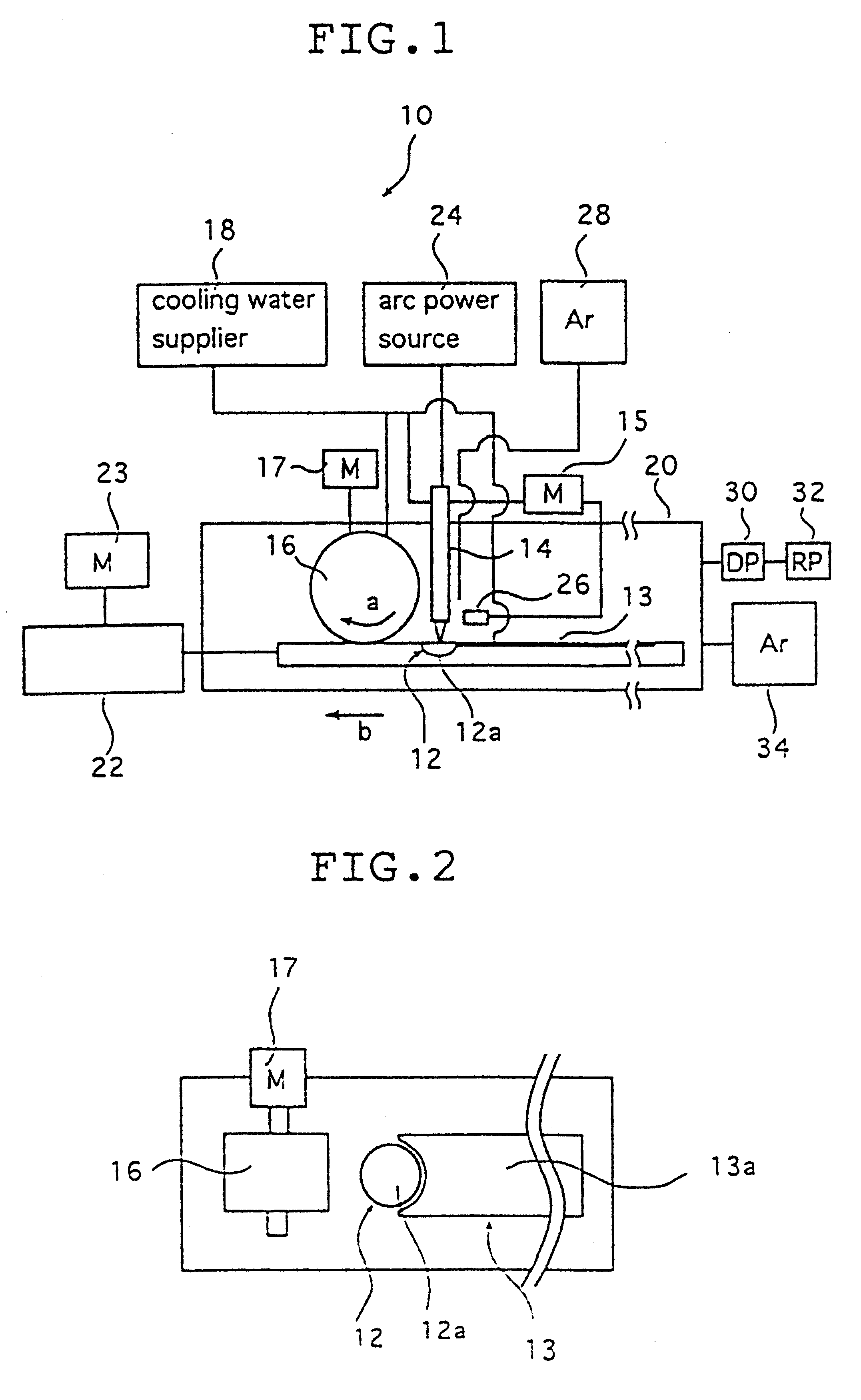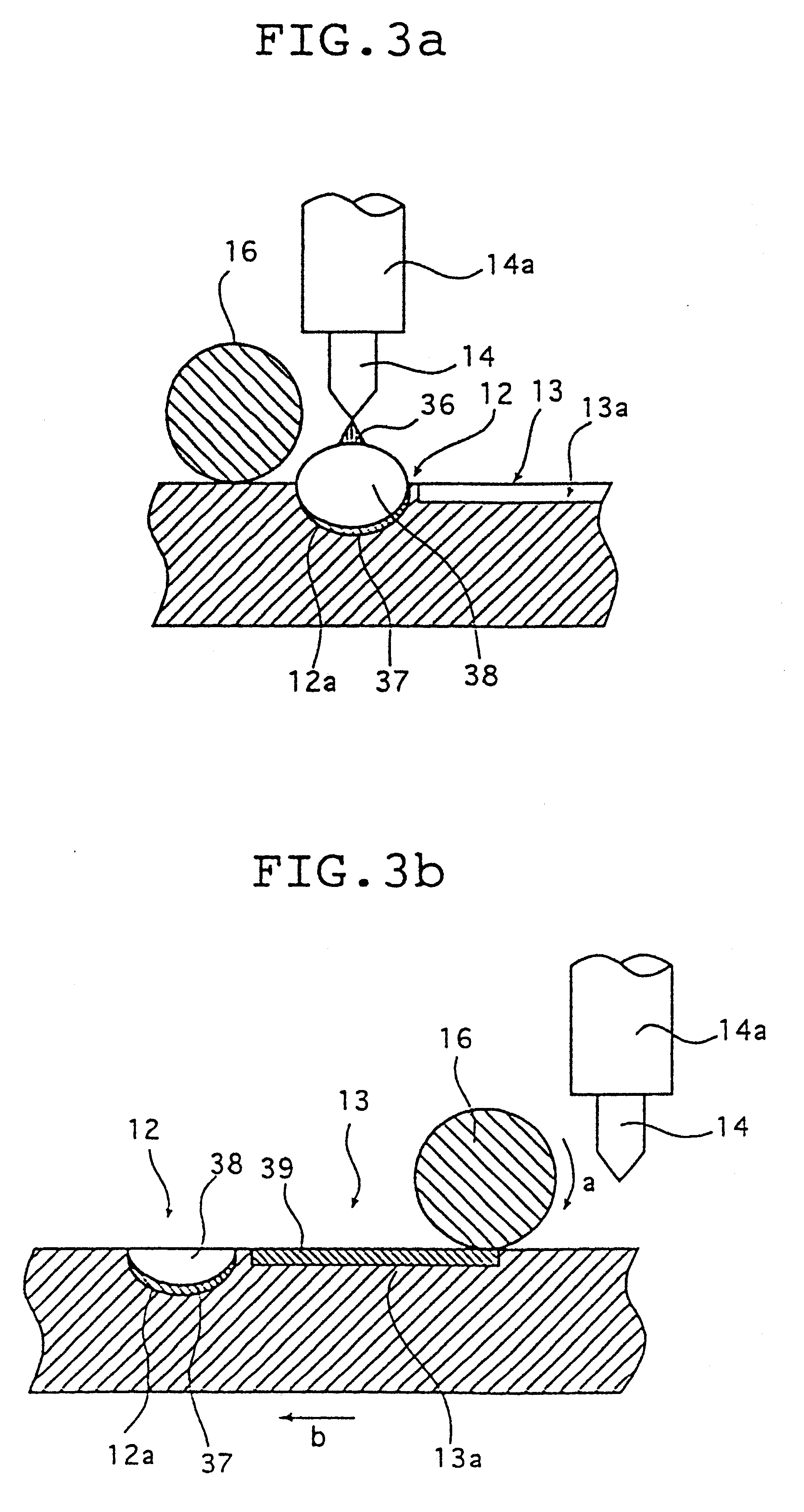Process and apparatus for producing metallic glass
a technology of metallic glass and process, applied in metal-working apparatus, foundry patterns, foundry moulds, etc., can solve the problems of insufficient mass of material produced inability to produce bulk material by such conventional methods, and far from satisfactory bulk material production, etc., to achieve simple process, simple apparatus, excellent strength properties
- Summary
- Abstract
- Description
- Claims
- Application Information
AI Technical Summary
Benefits of technology
Problems solved by technology
Method used
Image
Examples
examples 1 to 14
The metallic glass production apparatus of forging type 50 shown in FIGS. 5 and 6 was used to produce amorphous bulk material alloys of rectangular plate with various dimensions in the range of 100 mm (length).times.30 mm (width).times.2 to 20 mm (thickness) from the 14 alloys shown in Table 1.
In the Examples, the water-cooled copper hearth 12 was a semispherical recess with a dimension of 30 mm (diam.).times.4 mm (depth), and the cavity 52a of the lower mold 52 was a rectangular recess with a dimension of 210 mm (length).times.30 mm (width).times.2 mm (depth).
The water-cooled electrode 14 used was the one which is capable of fully utilizing the arc heat source of 3,000 .degree. C. and controlling the temperature by means of an IC cylister. The argon gas for cooling was injected from a cooling gas-injection port (not shown) provided on the adapter 14a. The water-cooled electrode 14 had an arc generating site comprising thorium-containing tungsten, and therefore, electrode consumptio...
PUM
| Property | Measurement | Unit |
|---|---|---|
| width | aaaaa | aaaaa |
| width | aaaaa | aaaaa |
| thickness | aaaaa | aaaaa |
Abstract
Description
Claims
Application Information
 Login to View More
Login to View More - R&D
- Intellectual Property
- Life Sciences
- Materials
- Tech Scout
- Unparalleled Data Quality
- Higher Quality Content
- 60% Fewer Hallucinations
Browse by: Latest US Patents, China's latest patents, Technical Efficacy Thesaurus, Application Domain, Technology Topic, Popular Technical Reports.
© 2025 PatSnap. All rights reserved.Legal|Privacy policy|Modern Slavery Act Transparency Statement|Sitemap|About US| Contact US: help@patsnap.com



